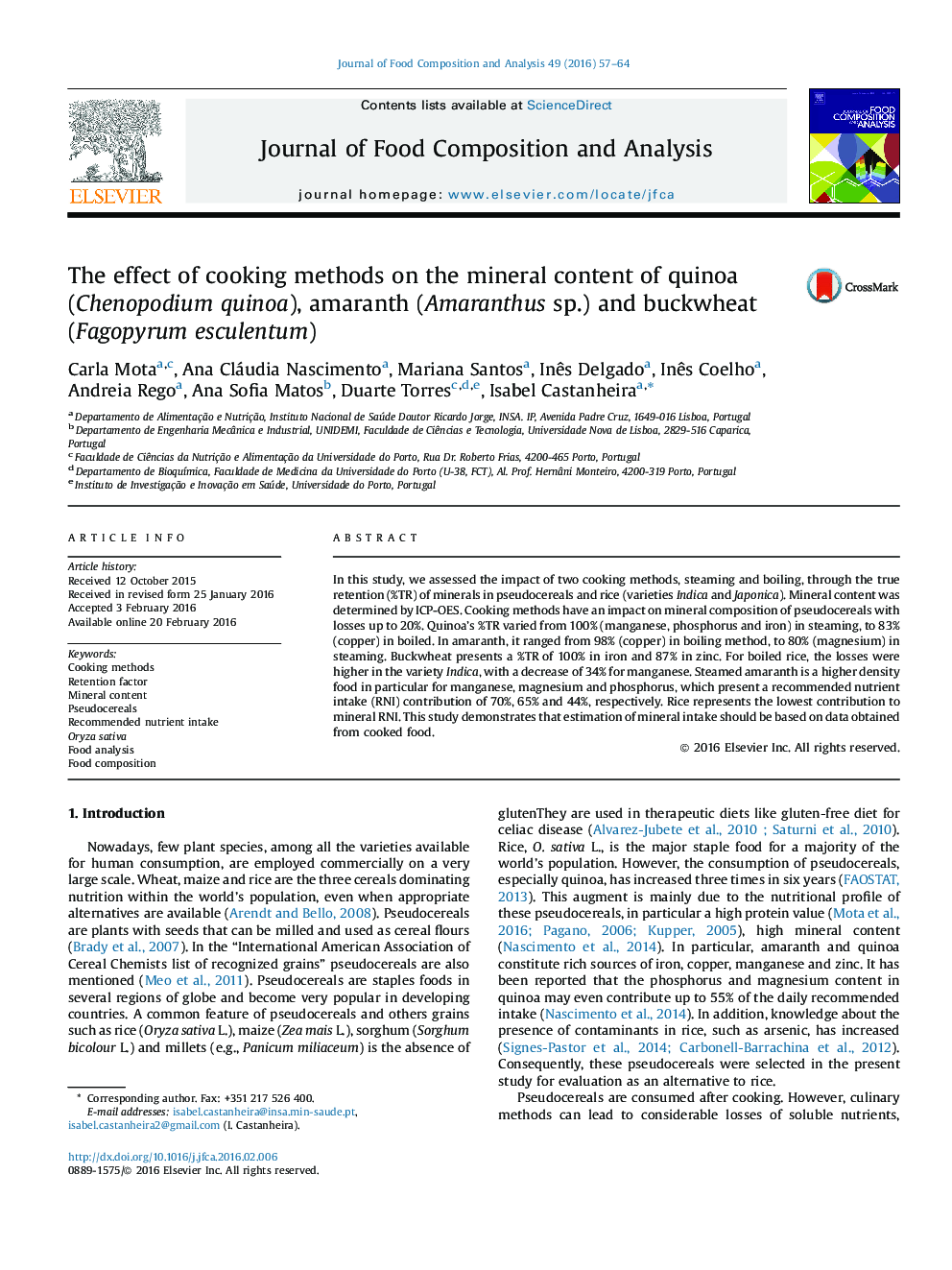| Article ID | Journal | Published Year | Pages | File Type |
|---|---|---|---|---|
| 1218059 | Journal of Food Composition and Analysis | 2016 | 8 Pages |
•Effect of cooking on mineral profile was studied for four gluten free grains.•Manganese was the most affected by the cooking process on Indica rice.•Steamed quinoa presented the lowest differences when compared with raw.•Amaranth provide the higher intake of minerals.
In this study, we assessed the impact of two cooking methods, steaming and boiling, through the true retention (%TR) of minerals in pseudocereals and rice (varieties Indica and Japonica). Mineral content was determined by ICP-OES. Cooking methods have an impact on mineral composition of pseudocereals with losses up to 20%. Quinoa’s %TR varied from 100% (manganese, phosphorus and iron) in steaming, to 83% (copper) in boiled. In amaranth, it ranged from 98% (copper) in boiling method, to 80% (magnesium) in steaming. Buckwheat presents a %TR of 100% in iron and 87% in zinc. For boiled rice, the losses were higher in the variety Indica, with a decrease of 34% for manganese. Steamed amaranth is a higher density food in particular for manganese, magnesium and phosphorus, which present a recommended nutrient intake (RNI) contribution of 70%, 65% and 44%, respectively. Rice represents the lowest contribution to mineral RNI. This study demonstrates that estimation of mineral intake should be based on data obtained from cooked food.
